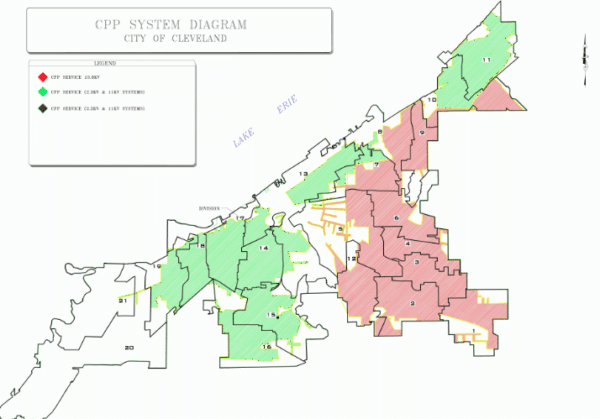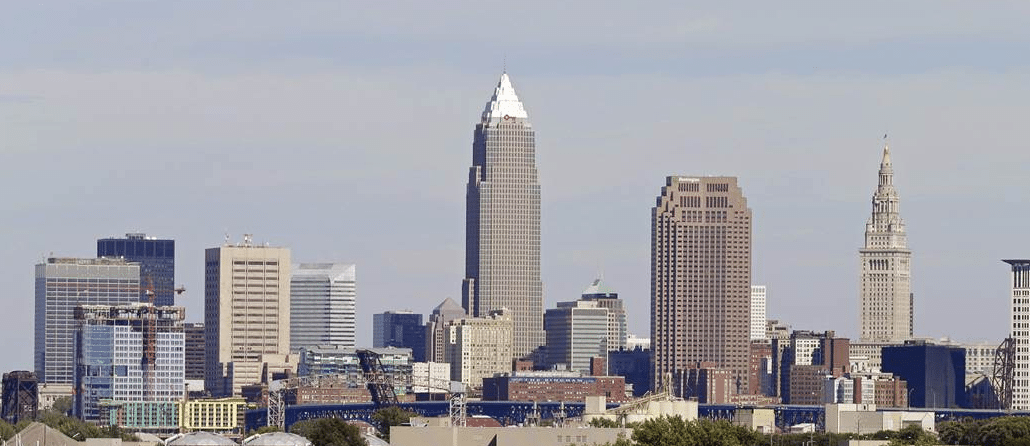Last week Cleveland made waves as the first city in Ohio, and the 82nd nationally, to pledge to move to 100% renewable energy in its electricity sector. The announcement by Mayor Frank Jackson is part of a wider plan to reduce the community’s carbon emissions by 80% by 2050, and to make the city of 388,000 residents and former center of heavy industry a “green city on a blue lake.”
The Cleveland Climate Action Plan features multiple complementary pathways to achieve these reductions. The first objective in the “Clean Energy” section of the document is to increase local solar generation, both through community solar installations and greater deployment of rooftop solar.
In terms of rooftop solar, there is still room to grow. The City notes that it released a Solar Energy Guide in 2017 to make it easier for residents to go solar, and also credits the completion of its recent Solar Roadmap assessment in earning it s “Bronze” designation from the SolSmart challenge. Cleveland is now aiming to gain recognition from this program at a silver or gold level.
The City also notes that it has installed three large installations on brownfields and landfills, which is where the real opportunity may lie. As a former industrial powerhouse, Cleveland has a large number of vacant, under-utilized or abandoned industrial sites. and the Climate Action Plan states that the city is seeking to identify and install community solar projects on these properties.
 Progress to date is limited. Cuyahoga County has only 15 MW of total installed solar. And while a 2016 technical report from National Renewable Energy Laboratories (NREL) found that the city has the technical capacity to host 1.7 GW of rooftop solar – more than 100 times what is currently installed – this would still only meet 44% of electricity demand.
Progress to date is limited. Cuyahoga County has only 15 MW of total installed solar. And while a 2016 technical report from National Renewable Energy Laboratories (NREL) found that the city has the technical capacity to host 1.7 GW of rooftop solar – more than 100 times what is currently installed – this would still only meet 44% of electricity demand.
As such, the city will not only need to make the most of its landfills and brownfields, but also to shift the electricity procurement of its utilities. And this may be more complicated. Cleveland is split between the service area of municipal utility Cleveland Public Power (CPP) and First Energy, which has been one of the utilities most staunchly wedded to coal in the United States.
This shows in electricity statistics. CPP has already more than doubled its portion of renewable energy from 7% in 2010 to 16% six years later, but First Energy was still only at 4% in 2016.

However, the City has the tool of community choice aggregation, and has already purchased enough renewable energy credits to move to 100% renewable electricity for 50,000 residents and 5,000 small businesses in First Energy’s service area in the city. Cleveland also says that it will create a Clean Energy Equity plan to support low-income households and small organizations in purchasing renewables, but does not provide further details.
As part of the Climate Action Plan Cleveland is planning to get to 15% renewable electricity by 2022, and 25% by 2030. It remains to be seen how much local solar Cleveland will build to meet its goal, and how much will be met using other means.
This content is protected by copyright and may not be reused. If you want to cooperate with us and would like to reuse some of our content, please contact: editors@pv-magazine.com.









By submitting this form you agree to pv magazine using your data for the purposes of publishing your comment.
Your personal data will only be disclosed or otherwise transmitted to third parties for the purposes of spam filtering or if this is necessary for technical maintenance of the website. Any other transfer to third parties will not take place unless this is justified on the basis of applicable data protection regulations or if pv magazine is legally obliged to do so.
You may revoke this consent at any time with effect for the future, in which case your personal data will be deleted immediately. Otherwise, your data will be deleted if pv magazine has processed your request or the purpose of data storage is fulfilled.
Further information on data privacy can be found in our Data Protection Policy.